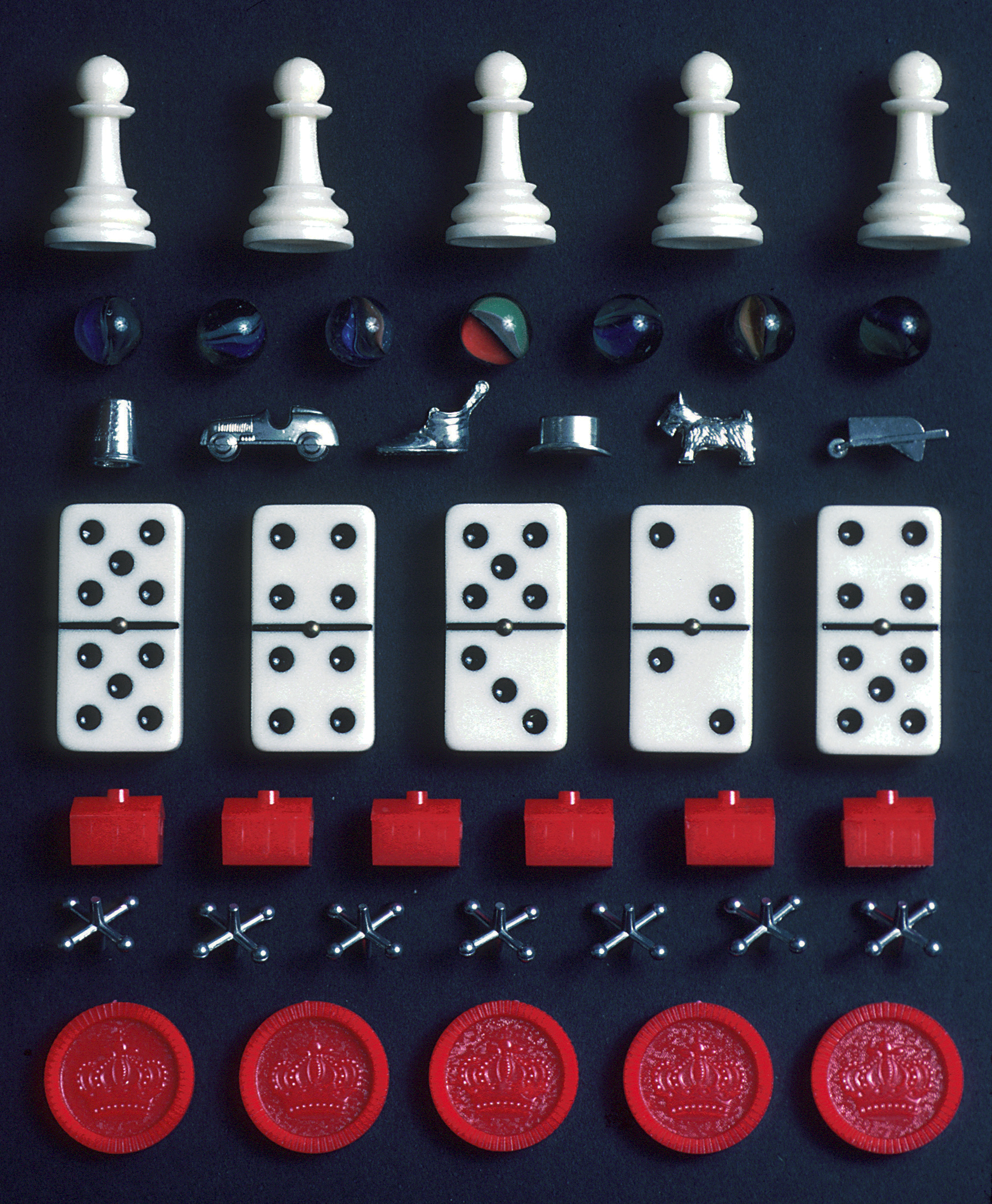|
Ganbare Goemon! Karakuri Dōchū
is a video game produced by Konami. It is the second game in the ''Ganbare Goemon'' series (sometimes known in English as ''Mystical Ninja'') and the first to be released on a video game console and home computer. It was initially released for the Family Computer on July 30, 1986 and later released for the MSX2 a year later. The Famicom version was re-released in Japan only for the Game Boy Advance under the Famicom Mini label and for the Wii, Nintendo 3DS and Wii U under the Virtual Console service. A direct sequel, ''Ganbare Goemon 2'', was released for the Famicom on January 4, 1989. Gameplay The game revolves around the main character, Goemon, and his exploits. As the name suggests, his character was based on Ishikawa Goemon, the noble thief of Japanese folklore. Unlike its sequels, this game still doesn't feature the comic situation and strange characters that define the series, and Goemon is portrayed as a noble thief rather than a plain hero. The game plays as a top view ... [...More Info...] [...Related Items...] OR: [Wikipedia] [Google] [Baidu] |
Konami
, commonly known as Konami, , is a Japanese multinational entertainment company and video game developer and video game publisher, publisher headquartered in Chūō, Tokyo, Chūō, Tokyo. The company also produces and distributes trading cards, anime, ''tokusatsu'', pachinko machines, slot machines, and List of Japanese arcade cabinets, arcade cabinets. It has casinos around the world, and operates health and physical fitness clubs across Japan. The company originated in 1969 as a jukebox rental and repair business in Toyonaka, Osaka, Japan, by Kagemasa Kōzuki, who remains the company's chairman. Additionally, Konami owns Bemani, known for ''Dance Dance Revolution'' and ''Beatmania'', as well as the assets of former game developer Hudson Soft, known for ''Bomberman'', ''Adventure Island (video game), Adventure Island'', ''Bonk (series), Bonk'', ''Bloody Roar'', and ''Star Soldier''. Konami is the twentieth-largest Lists of video game companies, game company in the world by re ... [...More Info...] [...Related Items...] OR: [Wikipedia] [Google] [Baidu] |
Virtual Console
The Virtual Console was a line of downloadable retro video games for Nintendo's Wii and Wii U home video game consoles and the Nintendo 3DS family of handheld systems. The Virtual Console lineup consisted of titles originally released on past home and handheld consoles and were run in their original forms through software emulation (excluding Game Boy Advance titles on the 3DS and Wii titles on Wii U), therefore remaining mostly unaltered, and could be purchased from the Wii Shop Channel or Nintendo eShop for between 500 and 1,200 Wii Points, or using real currency, with prices depending on the system, rarity, and/or demand. On Wii and Wii U, the Virtual Console's library of past games consisted of titles originating from the Nintendo Entertainment System (NES), Super Nintendo Entertainment System (SNES), Game Boy, Game Boy Color, Nintendo 64, Game Boy Advance, and Nintendo DS, as well as Sega's Master System, Genesis and Game Gear, NEC's TurboGrafx-16, and SNK' ... [...More Info...] [...Related Items...] OR: [Wikipedia] [Google] [Baidu] |
Video Games Developed In Japan
Video games are a major industry in Japan, and the country is considered one of the most influential in video gaming. Japanese game development is often identified with the Golden age of arcade video games, golden age of video games and the country is home to many notable video game companies such as Nintendo, Sega, Bandai Namco Entertainment, Taito, Konami, Square Enix, Capcom, NEC, SNK, Koei Tecmo, Sony and formerly its branch Sony Interactive Entertainment, Sony Computer Entertainment. In 2022, Japan was the List of video games markets by country, third largest video game market in the world after the Video games in the United States, United States and Video games in China, China. The space is known for the catalogs of several major publishers, all of whom have competed in the video game console and video arcade markets at various points. Released in 1965, ''Periscope (arcade game), Periscope'' was a major Video arcade, arcade hit in Japan, preceding several decades of succe ... [...More Info...] [...Related Items...] OR: [Wikipedia] [Google] [Baidu] |
Video Games Based On Japanese Mythology
Video is an electronic medium for the recording, copying, playback, broadcasting, and display of moving visual media. Video was first developed for mechanical television systems, which were quickly replaced by cathode-ray tube (CRT) systems, which, in turn, were replaced by flat-panel displays of several types. Video systems vary in display resolution, aspect ratio, refresh rate, color capabilities, and other qualities. Analog and digital variants exist and can be carried on a variety of media, including radio broadcasts, magnetic tape, optical discs, computer files, and network streaming. Etymology The word ''video'' comes from the Latin verb ''video,'' meaning to see or ''videre''. And as a noun, "that which is displayed on a (television) screen," History Analog video Video developed from facsimile systems developed in the mid-19th century. Early mechanical video scanners, such as the Nipkow disk, were patented as early as 1884, however, it took several decades bef ... [...More Info...] [...Related Items...] OR: [Wikipedia] [Google] [Baidu] |
Single-player Video Games
A single-player video game is a video game where input from only one player is expected throughout the gameplay. Video games in general can feature several game modes, including single-player modes designed to be played by a single player in addition to multi-player modes. Most modern console games, PC games and arcade games are designed so that they can be played by a single player; although many of these games have modes that allow two or more players to play (not necessarily simultaneously), very few actually require more than one player for the game to be played. The '' Unreal Tournament'' series is one example of such. History The earliest video games, such as '' Tennis for Two'' (1958), '' Spacewar!'' (1962), and '' Pong'' (1972), were symmetrical games designed to be played by two players. Single-player games gained popularity only after this, with early titles such as '' Speed Race'' (1974) and '' Space Invaders'' (1978). The reason for this, according to Raph Ko ... [...More Info...] [...Related Items...] OR: [Wikipedia] [Google] [Baidu] |
Nintendo Entertainment System Games
The Nintendo Entertainment System, Family Computer/Nintendo Entertainment System has a library of ' officially licensed games released during their lifespans, plus 7 official multicarts and 2 championship cartridges. Of these, 672 were released exclusively in Japan, 187 were released exclusively in North America, and 19 were released exclusively in PAL countries. Worldwide, 521 games were released. Its launch games for the Famicom were ''Donkey Kong (1981 video game), Donkey Kong'', ''Donkey Kong Jr.'', and ''Popeye (video game), Popeye''. Only first-party titles were available upon launch, but Nintendo started a licensing program the following year that allowed third-party companies such as Namco, Hudson Soft, Taito, Konami, Bandai, and Capcom to create titles and produce their own cartridges for the Famicom in exchange for royalty payments; Nintendo later revised the program to mandate itself as the producer of all cartridges while carrying it with the console outside Japan. ... [...More Info...] [...Related Items...] OR: [Wikipedia] [Google] [Baidu] |
MSX2 Games
MSX is a standardized home computer architecture, announced by ASCII Corporation on June 16, 1983. It was initially conceived by Microsoft as a product for the Eastern sector, and jointly marketed by Kazuhiko Nishi, the director at ASCII Corporation. Microsoft and Nishi conceived the project as an attempt to create unified standards among various home computing system manufacturers of the period, in the same fashion as the VHS standard for home video tape machines. The first MSX computer sold to the public was a Mitsubishi ML-8000, released on October 21, 1983, thus marking its official release date. MSX systems were popular in Japan and several other countries. There are differing accounts of MSX sales. One source claims 9 million MSX units were sold worldwide, including in Japan alone, whereas ASCII Corporation founder Kazuhiko Nishi claims that 3 million were sold in Japan, and 1 million overseas. Despite Microsoft's involvement, few MSX-based machines were released in ... [...More Info...] [...Related Items...] OR: [Wikipedia] [Google] [Baidu] |
Ganbare Goemon Games
Ganbare (がんばれ, ''Hang in there!''), a form of the Japanese verb ''ganbaru'', may refer to: * ''Ganbare! Gian!!'', a short Doraemon film * ''Ganbare!! Robocon'', a Japanese television program * ''Ganbare!! Tabuchi-kun!!'', a yonkoma manga series * Ganbare 35, a Canadian racing sailboat design See also * ''Ganbareh'', a 2002 song by Sash! {{disambig ... [...More Info...] [...Related Items...] OR: [Wikipedia] [Google] [Baidu] |
Game Boy Advance Games
A game is a structured type of play usually undertaken for entertainment or fun, and sometimes used as an educational tool. Many games are also considered to be work (such as professional players of spectator sports or video games) or art (such as games involving an artistic layout such as mahjong, solitaire, or some video games). Games have a wide range of occasions, reflecting both the generality of its concept and the variety of its play. Games are sometimes played purely for enjoyment, sometimes for achievement or reward as well. They can be played alone, in teams, or online; by amateurs or by professionals. The players may have an audience of non-players, such as when people are entertained by watching a chess championship. On the other hand, players in a game may constitute their own audience as they take their turn to play. Often, part of the entertainment for children playing a game is deciding who is part of their audience and who participates as a player. A ... [...More Info...] [...Related Items...] OR: [Wikipedia] [Google] [Baidu] |
1986 Video Games
The year 1986 was designated as the International Year of Peace by the United Nations. Events January * January 1 ** Aruba gains increased autonomy from the Netherlands by separating from the Netherlands Antilles. ** Spain and Portugal enter the European Community, which becomes the European Union in 1993. * January 11 – The Sir Leo Hielscher Bridges, Gateway Bridge in Brisbane, Australia, at this time the world's longest prestressed concrete free-cantilever bridge, is opened. * January 13–January 24, 24 – South Yemen Civil War. * January 20 – The United Kingdom and France announce plans to construct the Channel Tunnel. * January 24 – The Voyager 2 space probe makes its first encounter with Uranus. * January 25 – Yoweri Museveni's National Resistance Army Rebel group takes over Uganda after leading a Ugandan Bush War, five-year guerrilla war in which up to half a million people are believed to have been killed. They will later use January 26 as the official date ... [...More Info...] [...Related Items...] OR: [Wikipedia] [Google] [Baidu] |
MobyGames
MobyGames is a commercial website that catalogs information on video game A video game or computer game is an electronic game that involves interaction with a user interface or input device (such as a joystick, game controller, controller, computer keyboard, keyboard, or motion sensing device) to generate visual fe ...s and the people and companies behind them via crowdsourcing. This includes nearly 300,000 games for hundreds of platforms. The site is supported by banner ads and a small number of people paying to become patrons. Founded in 1999, ownership of the site has changed hands several times. It has been owned by Atari SA since 2022. Site features Edits and submissions go through a leisurely verification process by volunteer "approvers". This can range from immediate (minutes) to gradual (days or months). The most commonly used sources are the video game's website, packaging, and credit screens. There is a published standard for game information and copyediting. ... [...More Info...] [...Related Items...] OR: [Wikipedia] [Google] [Baidu] |





